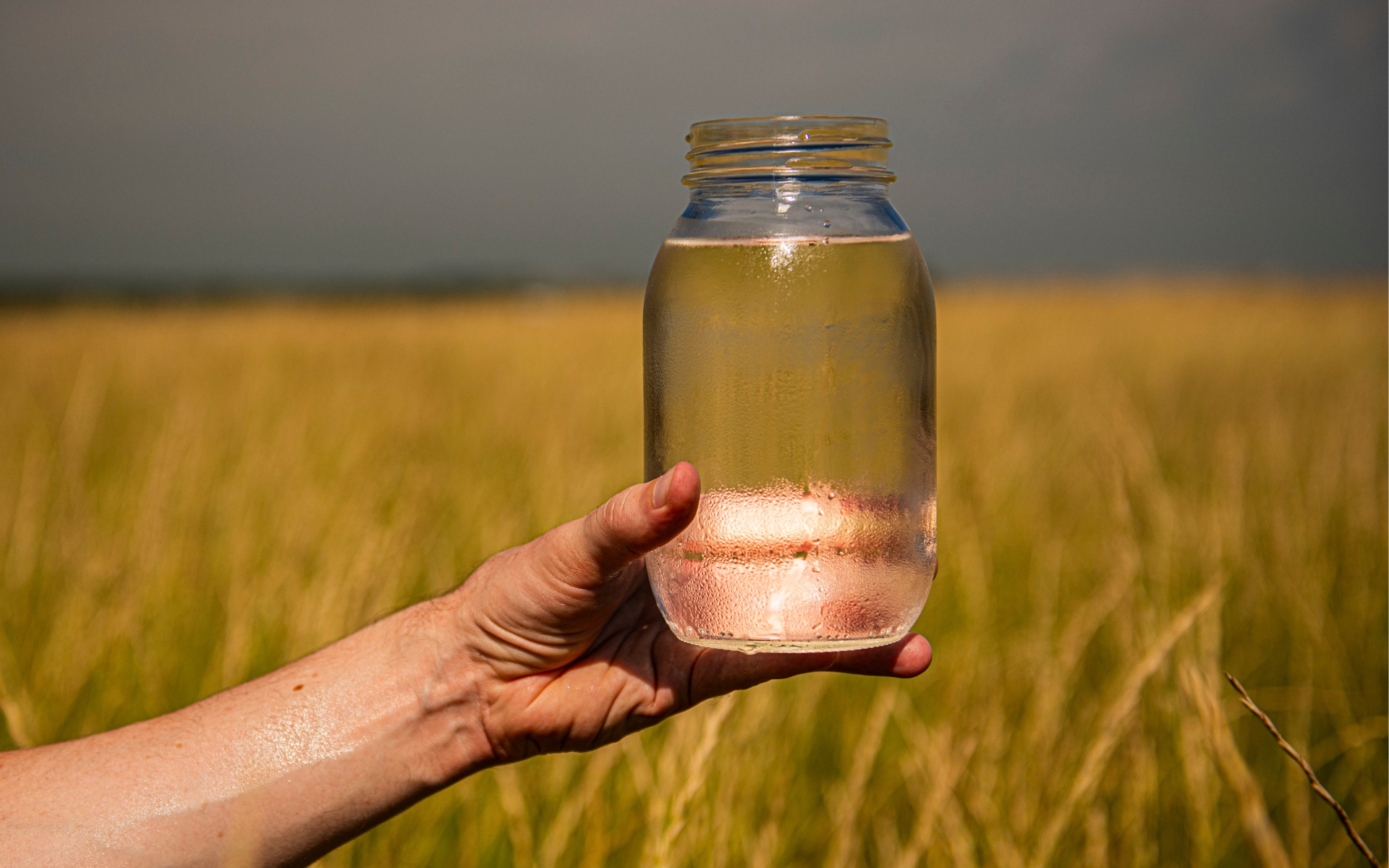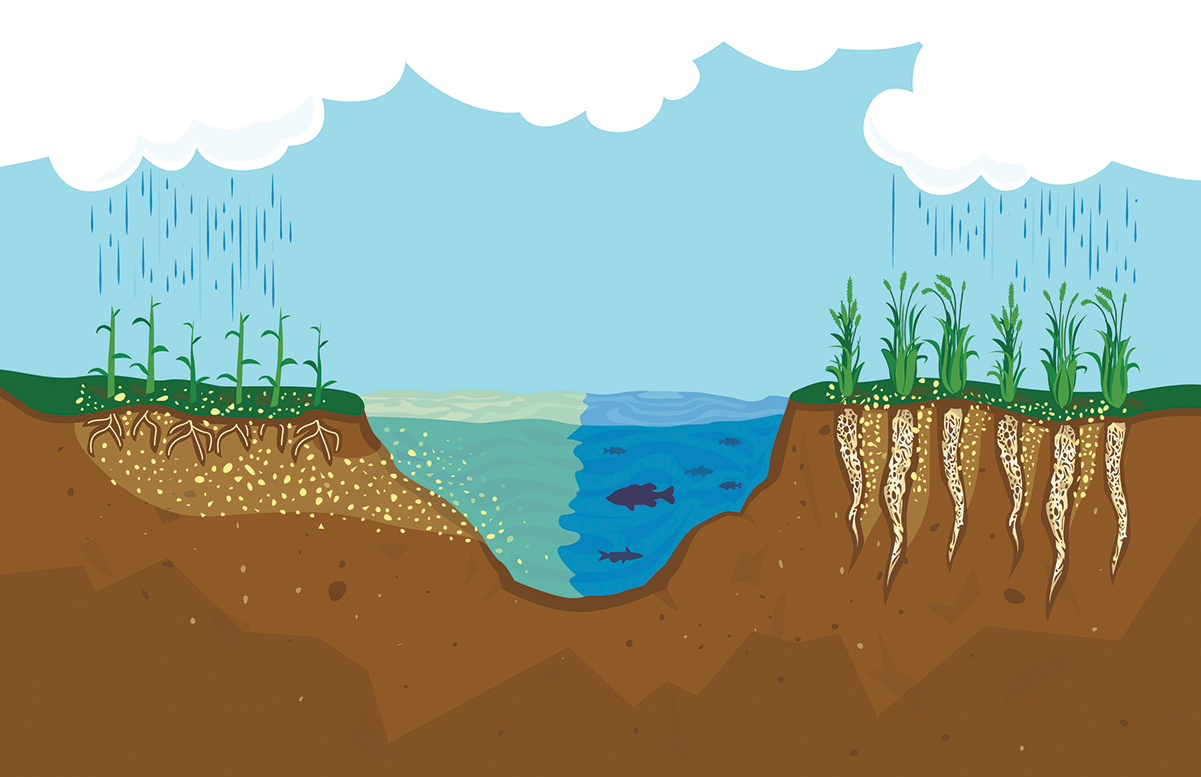A win for clean drinking water: Petition propels action on nitrate contamination in SE MN

Drinking water for thousands of Minnesotans may be contaminated with potentially dangerous levels of nitrate. A petition to the EPA pushed lawmakers to make begin addressing this pollution in the state's Karst region. (Photo by Dodd Demas for FMR)
Residents of southeast Minnesota will soon have access to safer drinking water. This is the direct result of the petition FMR co-signed with other conservation organizations that led federal regulators to pressure Minnesota to clean up nitrate contamination.
State lawmakers approved $16 million in spending this session to address potentially dangerous nitrate levels in southeastern Minnesota's groundwater. These measures (read the details below) will help protect the health of 400,000 residents, many of whom get their drinking water from private wells susceptible to nitrate contamination.
MPR News, the Star Tribune and MinnPost all wrote about the legislation.
“After three decades of inaction, we’re glad to see the Legislature starting to clean up drinking water in the vulnerable karst areas of southeastern Minnesota,” Minnesota Center for Environmental Advocacy (MCEA), the lead on the petition, wrote in an update.
The Minnesota Department of Health is hosting a series of related meetings in June 2024 for residents.
How a petition drove state action
Last spring, MCEA and 10 co-signing organizations, including FMR, petitioned the U.S. Environmental Protection Agency (EPA) to exercise its emergency powers under the Safe Drinking Water Act to address ongoing groundwater nitrate contamination in Southeast Minnesota. The area is known for its karst terrain where surface and groundwater travels more quickly through the Swiss-cheese-like topography.
About 95,000 of that region’s residents rely on private wells, and roughly 9% of the private wells tested in the area are above the designated “maximum contaminant level” for nitrates (10 mg/L).
Regulators selected that level to prevent “blue-baby syndrome,” a condition in which infants aren’t getting enough oxygen to their blood. But recent research suggests that even lower levels of nitrate are linked to serious health effects, including cancer, in both children and adults.
After receiving the petition, the EPA mandated in November that the state take action to provide safe drinking water for people in southeast Minnesota.
Minnesota lawmakers this session approved funding for several important steps. This includes investments to treat the existing nitrate issues, such as $2.79 million from the Clean Water Fund for private well testing, inventory and public health education; $2.8 million to provide home water treatment for private wells in the area that are at the 10 mg/L threshold; and $2 million to develop a nitrate monitoring program for surface water.
But there’s also some money specifically directed toward the root cause: farming practices that lead to nitrate contamination.
Preventing nitrate pollution in the first place
Agriculture is the primary source of nitrate contamination to Minnesota’s groundwater and the Mississippi River. Much of the blame lies with a system that pushes farmers to grow resource-intensive summer annual crops, leaving Minnesota with a pollutant-shedding big brown spot from fall through spring, year after year.
The Legislature’s investments this session will help reduce nitrate pollution from the area's farming sector, including:
- $3 million in Agricultural Best Management Practices loans to address nitrate contamination
- $1 million to retire farmland and put it into permanent conservation in community wellhead protection areas
- $495,000 for the Soil Health Financial Assistance Program
- $850,000 for grants to small feedlots to implement manure management projects that improve water quality
These collective measures are a laudable first step. But we need to do more to achieve meaningful, sustainable change that ensures everyone in Minnesota has safe drinking water.
The best way to prevent harmful levels of nitrate from ever entering our waters in the first place is through the use of clean-water crops, such as Kernza perennial grain, winter oilseeds, hazelnut, elderberry and more.

This illustration shows how nitrates, represented here by the yellow remnants, interact with short-rooted annuals (on the left) compared to a perennial such as Kernza (on the right). Kernza's long roots soak up excess nitrates, protecting both the water and aquatic wildlife. (Illustration by Kimberly Boustead and Emily Sauer)
Not only can these crops cover the big brown spot, but research has shown they can significantly reduce nitrate and sediment pollution to Minnesota’s waters, while also providing another source of income for farmers who plant them.
How can we make these crops a reality? Read about the program that supports local businesses working with clean-water crops, and how we’ll continue to champion this solution in the months and years ahead.
Also, check out our list of where to buy food and drink products made with clean-water crops, and show your support for these local businesses next time you fill up your cart.